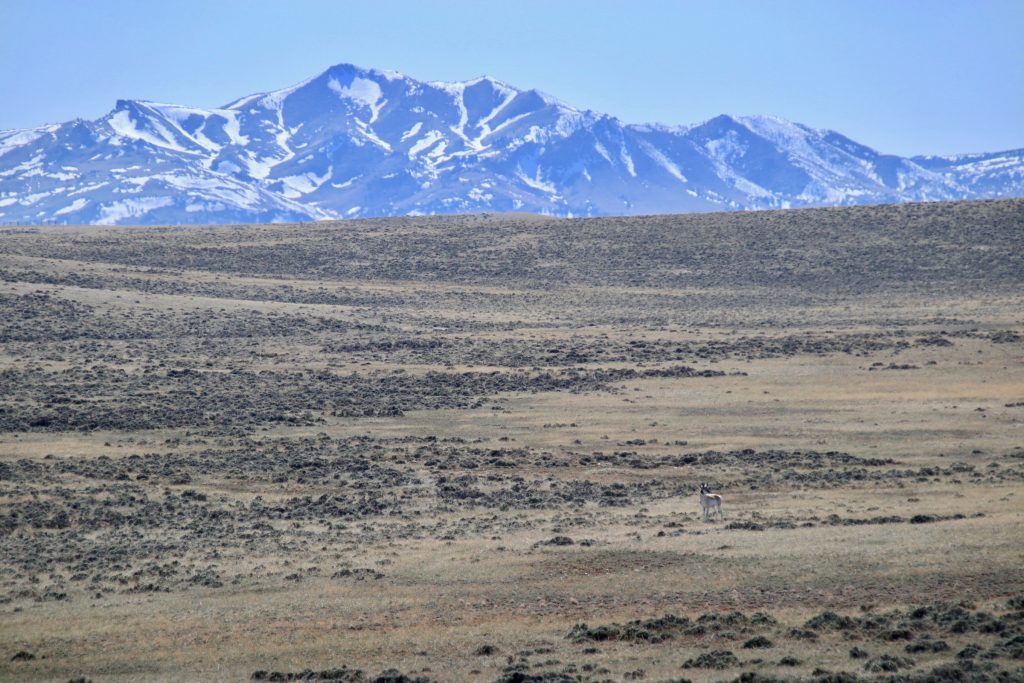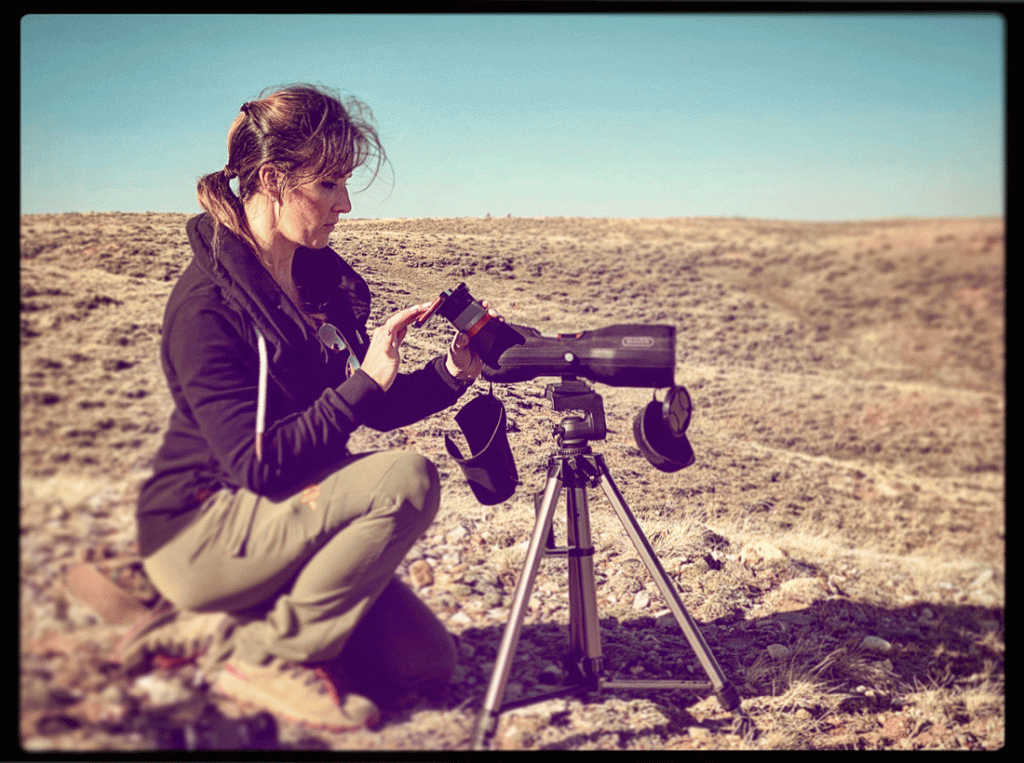Pronghorn Antelope 101
Today we are taking a look at SNS’ most popular species to hunt, pronghorn antelope. You may keep close tabs on them during the hunting season, but how much do you really know about them the rest of the year?
We may as well begin by addressing their name. Are they antelope? Are they pronghorn? Are they pronghorn antelope? Technically speaking, the Latin name for the species found here in North America is Antilocapra Americana, or American Goat Antelope. They are neither a member of the goat family or related to antelope found in Africa, however. The herds found in western and central North America are indeed Pronghorn. At least now we know where their nick name “speed goat” came from!
We already know they are one speedy creature. But how fast can they run? Pronghorn can easily sustain speeds of 30-35mph. They are also able to run a short distance burst upward of 50-60mph. Anatomically speaking, pronghorn have an oversize heart and lungs. That extra volume fuels their powerful running ability.
already has great horn growth.
Pronghorn are incredibly alert, skittish creatures. When they feel threatened, they will make a short vibrating snort, almost like blowing air through a low pitched kazoo. They are checking you out and warning the others. You may also see the hairs on their rump raise to flag others in the herd. They have made these adaptations to protect themselves from predators such as; cougars, wolves, coyotes and even eagles with their keen sense of smell and good hearing. Their #1 way of detecting danger however, is vision. Their eyes are like 10×20 power binoculars! It is unknown if they are able to detect color. Interestingly enough however, if you wave a white flag at a buck protecting his herd, he will likely charge in your direction. His heightened curiosity may even bring him in as close as 100-200 yards. If you see your pronghorn hunting guide doing this in September, he is not surrendering, but merely attempting to draw the buck within rifle range.
Adult pronghorn males stand about 3 feet at the shoulder and weigh 88-140 pounds. Females tend to weigh in at 75-110 pounds. They have hollow hair that is extremely fragile, but does a magnificent job insulating them during Wyoming’s cold winter months. Pronghorn are hoofed animals. They do not have a dewclaw which may help distinguishing their tracks from deer.
Pronghorn need to drink at least once, if not twice a day. We laugh about calling them “day drinkers”. Archery hunters will take advantage of their need for water and tend to set up blinds near watering holes. They are diurnal creatures, meaning active only during daylight hours. With the lack of movement over night, a pronghorn hunter and guide can leave a group at dark and find them in the same spot the next morning. Better be there at “O-dark-thirty” though! They will begin to move with the very 1st bit of day light. Pronghorn are calm the first hour of the day and the last hour. This makes a big difference in sneaking up and hunting such an alert animal!
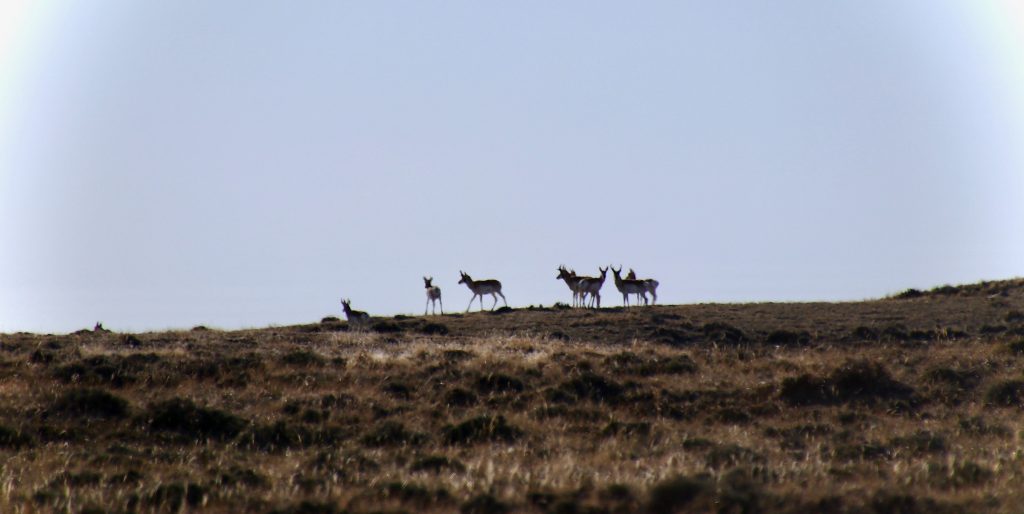
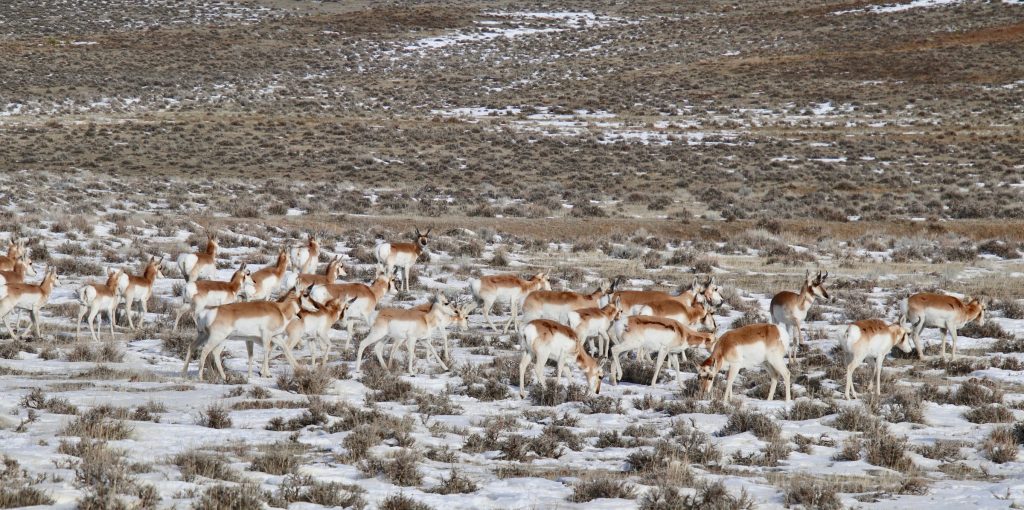
During the winter months, herds will congregate, often several hundred strong. They are the most vulnerable this time of year. This adds to how many eyes are watching, providing an extra level of protection. They rely on grasses and new sage growth for feed. When Wyoming winds blow and the prairies clear, forage becomes available. Their coloring provides great camouflage during the winter months when patches of snow dot the ground. As spring arrives, the herds break into smaller groups of males versus females. A doe will go off individually when she is about to delivery her spring baby. We all refer to them as antelope fawn but Google will tell you a baby antelope is called a calf. They typically have single babies but, it is also common to see twins trotting along behind mom in early June. Males are born with a patch of black color on their cheek which remains with them throughout their life. Their skulls have a boney core which reaches 5-6 inches in length. The sheath that grows around that core is made of dense hair follicles and is the classic horn we all picture. When new hair grows, it pushes off the old horn. These “sheds” are dropped around the first week of December in Wyoming.
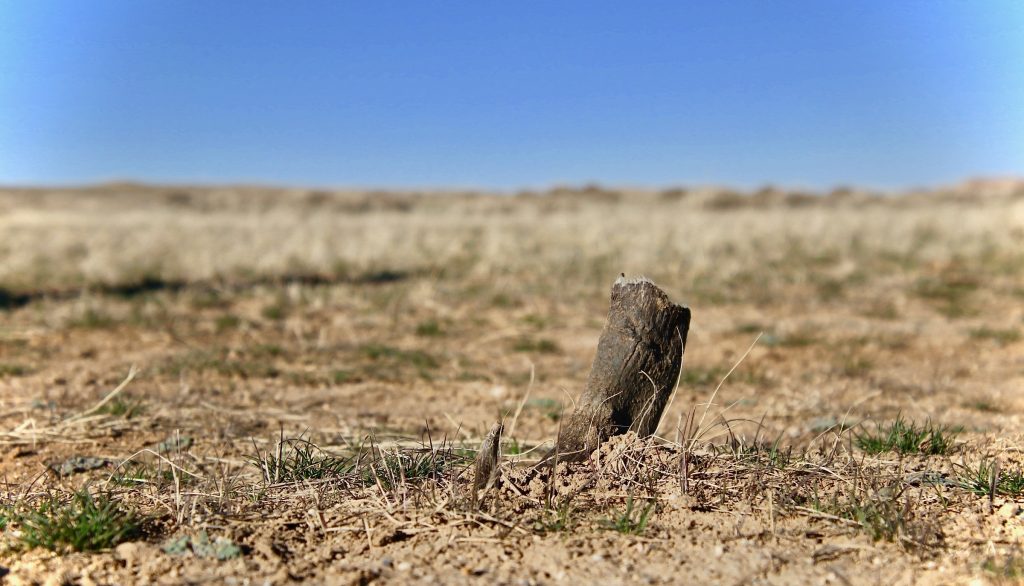
Speaking of horns, Wyoming’s genetic pool of pronghorn tend to have shorter horn length but larger mass. Hunting pronghorn elsewhere you will find different results. An interesting comparison; the pronghorn pool that reside in New Mexico tend to have taller horn growth but less mass. Wyoming’s pool of pronghorn average 14 inches in length. A Boone & Crockett pronghorn score is calculated from both the height and the diameter of the horn. The majority of mature pronghorn harvested with SNS Outfitter and Guides average 70-75 inches. Above average would be a score of 76-78 total inches. And an exceptional pronghorn may even measure as much as 79 inches to the low 80’s! During the rut, males will protect their breeding group of does fiercely. These “harem bucks” often fight hard, ramming and pounding heads. Hunters occasionally find horns with chips and missing pieces from this activity.
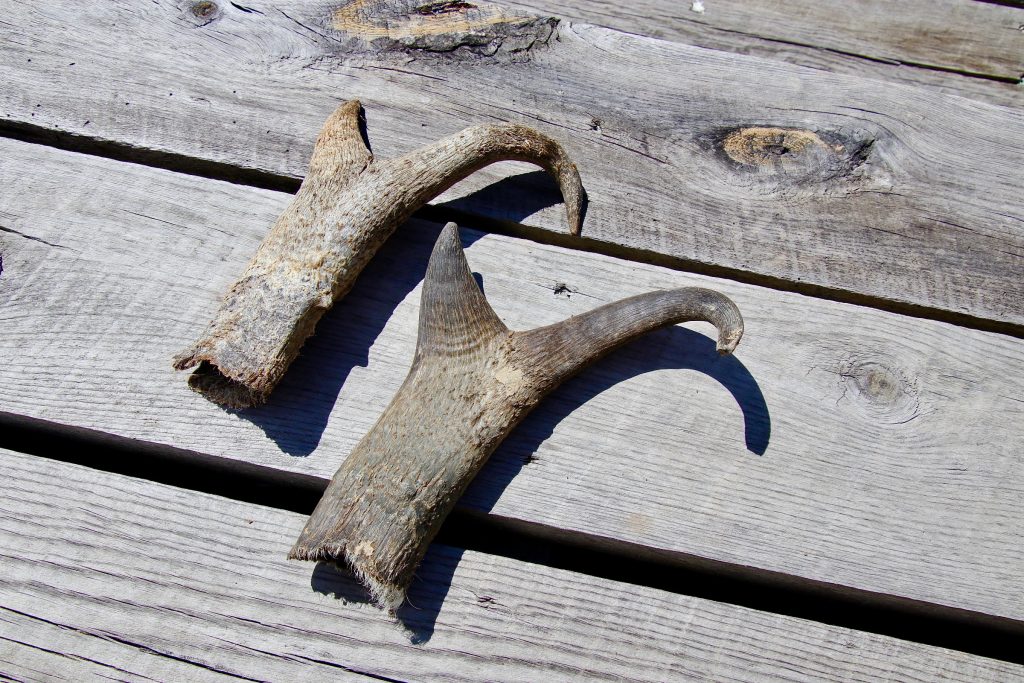
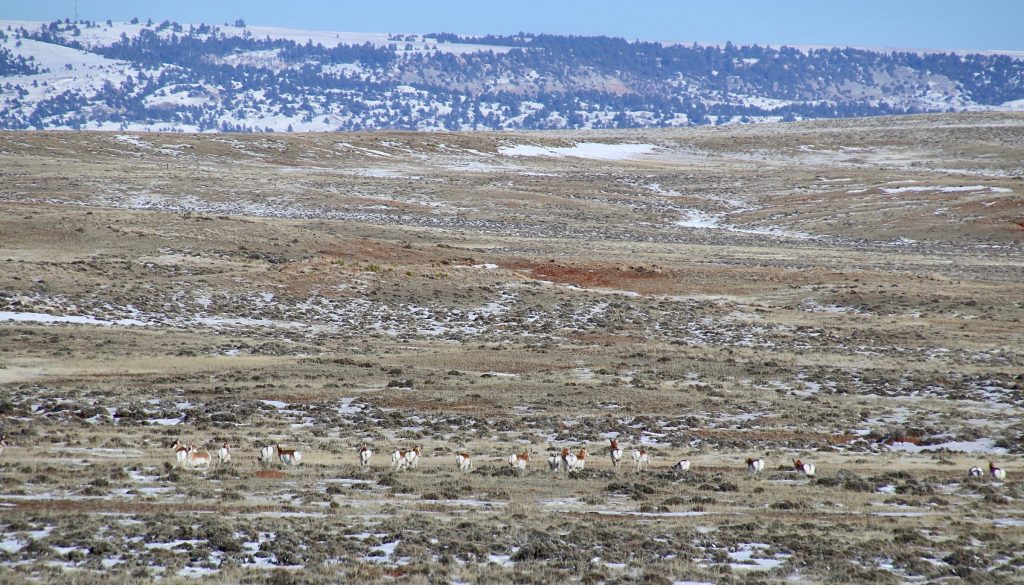
It is safe to say Wyoming has the largest population of pronghorn. We have more “speed goats” roaming the grasslands than the rest the states combined. The Wyoming Game & Fish estimate Wyoming’s herd population to be 500,000. This means a very stable population and excellent odds for your success hunting pronghorn in Wyoming.
Don’t make the mistake of thinking trophy horns are the only reason for hunting this species! Pronghorn make great table fare! Processing the meat properly is key! It all starts in the field and your SNS hunting guide will lead the way. The meat needs to be gutted and cooled quickly with care taken to not touch the meat with the hide. This would taint its flavoring. Due to their nomadic lifestyle, there is virtually no fat marbled through their muscles. The meat in that case does not tenderize by hanging and aging. When butchered, a pronghorn may measure up to as much as 30 pounds of meat. Talk about a great way to fill your freezer!
Hunting pronghorn is just plain fun! SNS uses a classic method of “Spot & Stalk”. When you join us for a guided pronghorn hunt, expect to traverse ranches in a pickup truck. Be sure to bring your binoculars or a spotting scope to glass the hillsides. When you find a specimen deemed worthy of hunting, its’ time to plan a stalk! Your goal will be to get close enough for a clean, ethical shot. This can be such an exciting challenge!
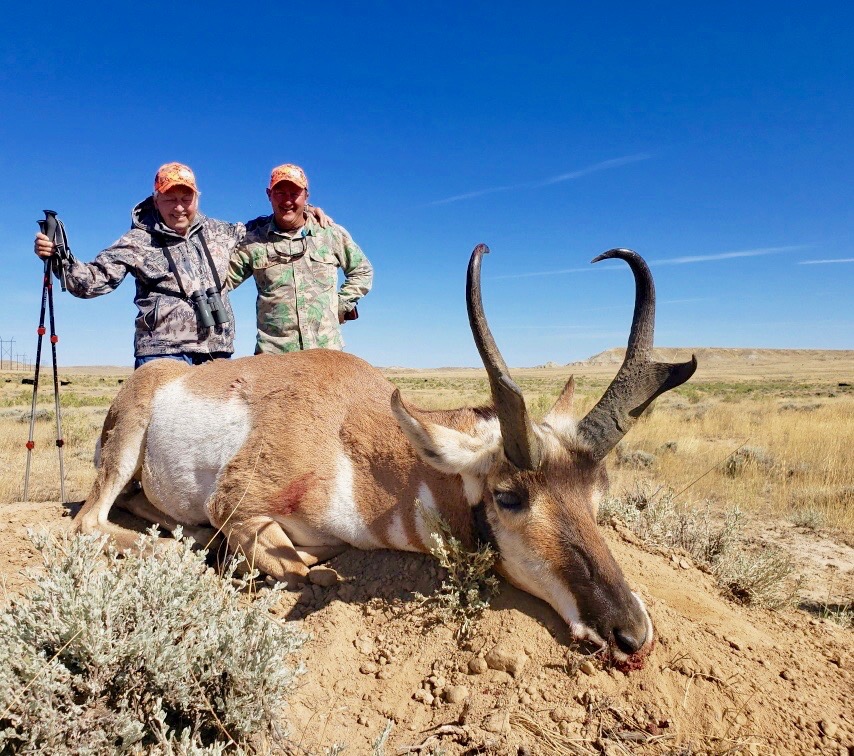
We hope you have learned something new about this fascinating animal. Stay tuned for more Western Wildlife 101 as the year progresses.
Stay Well & Stay Active!


